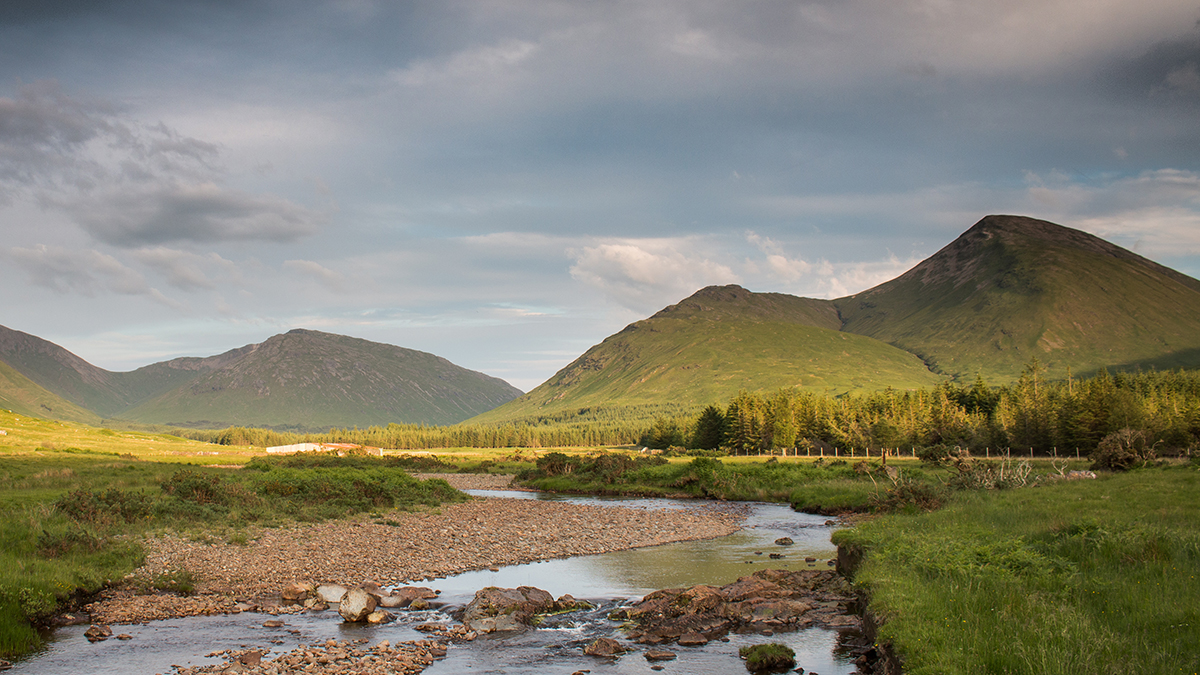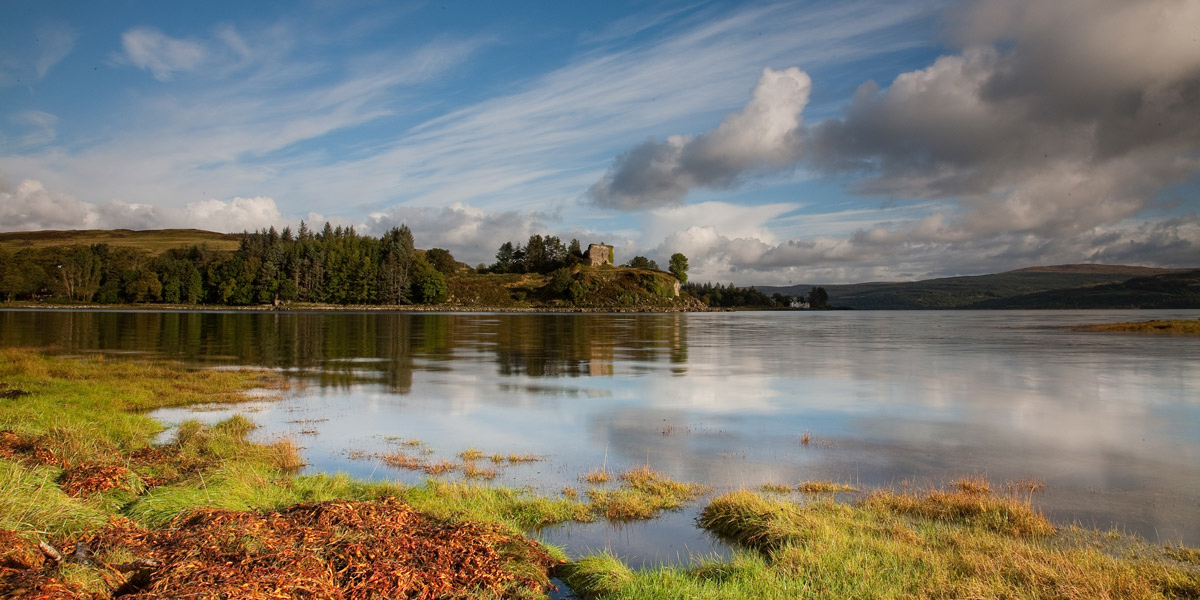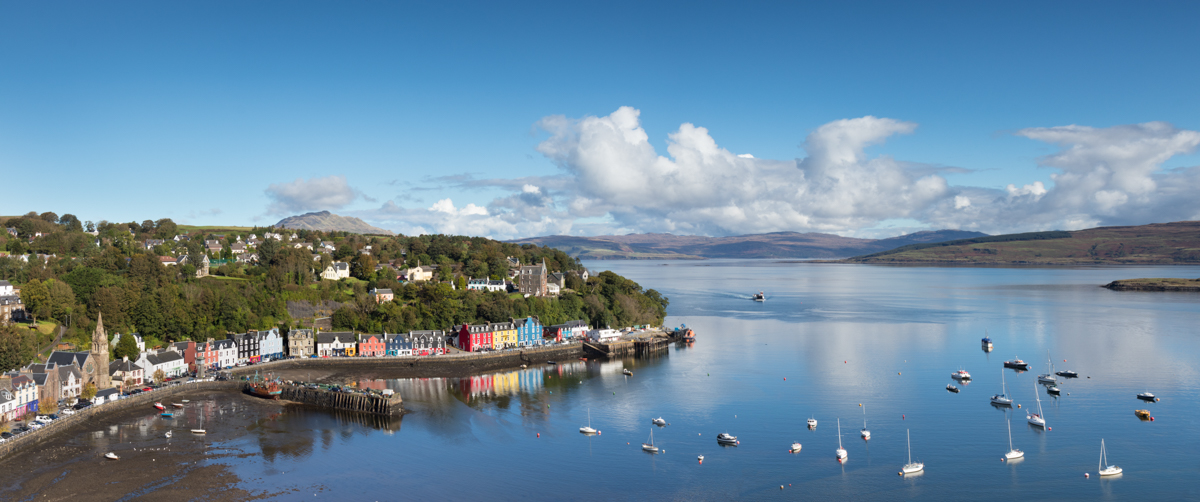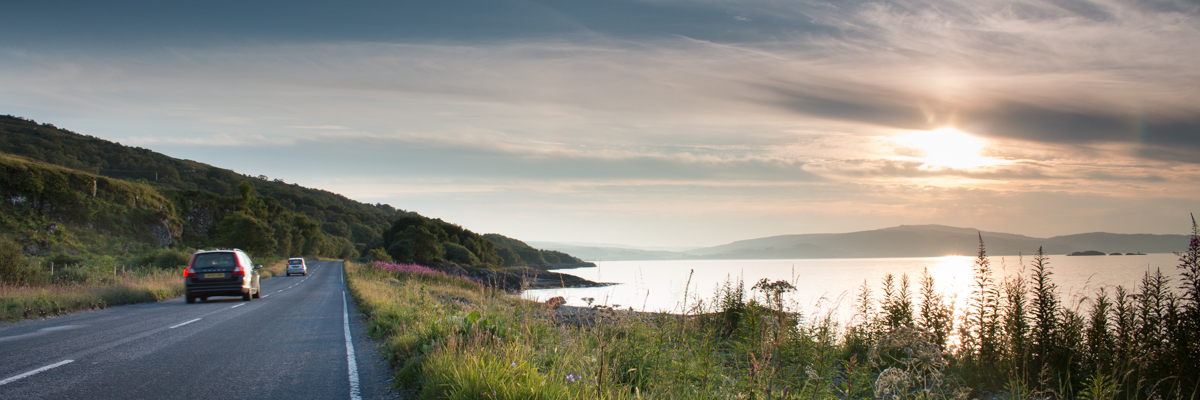Where To Visit On The Sound of Mull
Make the most of your journey alongside the Sound of Mull
Stretching along the Isle of Mull’s eastern shore, the Sound of Mull is the strip of water that divides the island from the west coast of mainland Britain. Visitors will cross it on either the Oban or Lochaline CalMac ferry. Naturally, many set straight off for their accommodation around the island, but there are lots of places to visit along the Sound on the way, and plenty lying within too! So take a bit of time to explore the Sound of Mull and all of its interesting sights en route with this guide.

Looking over Grasspoint at the southern end of the Sound of Mull
Grasspoint
At the southern end of the Sound of Mull is Grasspoint. Located at the mouth of beautiful Loch Don, this is where 18th-century cattle drovers who had grazed their cattle on Mull’s abundant grass would ship their cattle to the small island of Kerrera. From there, the cattle would swim the narrow channel of water to Oban. Back on dry land, they would continue their journey further south to the Lowlands and England. These days, Grasspoint offers some wonderful views of the mainland and the mouth of Loch Linnhe. Wildlife such as otters are regularly seen in the shallow waters. The small quay here is a reminder from the cattle’s past here.
Fishnish
Those interested in Mull’s abundant birdlife will also enjoy visiting Fishnish, just north of Craignure. White Tailed Eagles can be spotted from the timber built hide here. Those with a spring in their step and the energy for a day’s hike might like to take off up Glen Forsa with the uniquely-shaped hill Ben Talaidh in their sights. This is also located along the double-track road that leads north along the Sound of Mull.
At 748 metres high, Ben Talaidh is by no means Mull’s highest hill (this acclaim goes to Ben More, a munro standing at 966 metres) but it is a steep and challenging climb. On a sunny day, the summit yields views of the peaks of Mull, the Sound itself, and beyond the Sound, to the peaks of the Nevis range.

Salen
There is just one settlement of any size along the stretch of road that borders the Sound of Mull. The pretty village of Salen boasts this claim, lying about halfway between Craignure, where the ferry arrives from Oban, and Tobermory, the only town on the island.
A couple of miles to the north of Salen lie the ruins of Aros Castle. This was built around the same time as Duart Castle, its better known neighbour, in the 1200s. But while Duart is a day out in itself, with tea rooms and tours, the remains of Aros Castle, perched on a spit of land at the mouth of the Aros River, are perfect for leisurely outdoor exploring. Take care of its steep sides, though. From the promontory, there are fantastic views up and down the Sound of Mull, and over to Morvern on the other side.

Tobermory
At the north end of the Sound lies Tobermory, a pretty fishing harbour and home to many good restaurants and pubs. The excellent Mull Aquarium, a catch and release aquarium, and An Tobar fine arts centre, run by the organisation Comar, are also found here.
During spring and summer, boat trips go out to Staffa and the Treshnish Isles from Tobermory, where sharp-eyed visitors can see puffins and whales. For those looking for a bit of underwater adventure, the Sound of Mull has some of the best wreck diving in the British Isles. The stretch of water has a rich history of shipwrecks, including the SS Hispania, a Swedish merchant vessel that went down in 1954, well-known for being a well-preserved and interesting dive-site. There is a dive centre in Lochaline, on the mainland, that specialises in wreck diving.

Mull’s “motorway”
Mull’s “motorway” is the road that travels the length of the Sound. It is the only double-track road on the island, making it a lot faster moving than the rest of the roads. Don’t be tempted to overlook its many treasures along the way, though. At almost any point along its route, otters, seals, birds and deer can be spotted (sometimes in the road, so take care!), as well as birds overhead. Take some time to enjoy it and all that it offers.

Cars journey along the Sound of Mull on a late summer evening
